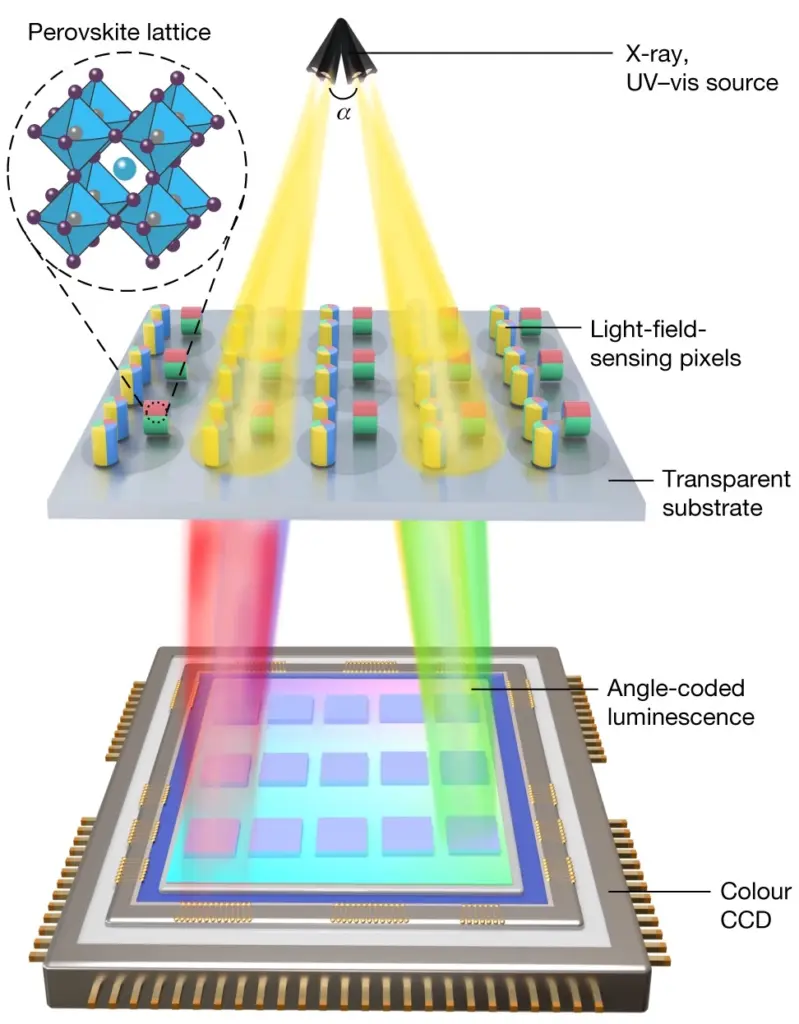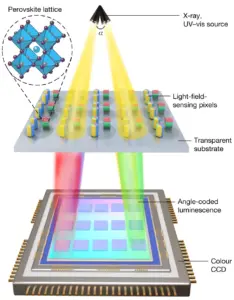Researchers have developed an innovative method using perovskite nanocrystal arrays to detect light rays’ intensity and direction, known as light-field detection. This breakthrough addresses the limitations of existing techniques that either require complex components or are restricted to specific wavelengths. The unique capabilities of perovskite nanocrystal arrays allow for the precise measurement of light rays across a wide spectrum, ranging from X-rays to visible light (covering wavelengths from 0.002 to 550 nanometers).

These nanocrystal arrays can convert light rays from specific directions into colorful outputs on a pixelated display, with an extraordinary level of detail. This means that we can now capture and represent the intricate properties of light in a more accurate and realistic way.
This groundbreaking technology opens up exciting possibilities for various applications. For engineers, it means enhanced three-dimensional imaging, accurate spatial positioning, and improved visible light and X-ray phase-contrast imaging. These advancements have immense potential in fields like robotics, virtual reality, medical imaging, and even space exploration, where precise detection and positioning of light sources are crucial.
Furthermore, this research has implications for the future of display technology. By integrating these perovskite nanocrystal arrays into displays, we can achieve higher-resolution images and videos with more realistic lighting effects. Imagine watching a movie or playing a video game where the light behaves just like it does in the real world, creating a truly immersive experience. Engineers can also explore the application of these arrays in advanced optical systems to measure wavefronts or phase, allowing for improved optics testing and beam characterization.
While the current design already achieves impressive results, the researchers anticipate further advancements. By incorporating advanced color detectors and refining the fabrication techniques, they aim to enhance the precision of measuring light direction and increase the resolution of the pixelated nanocrystal arrays. These improvements could lead to even sharper and more detailed images.
Reference
Yi, L., Hou, B., Zhao, H. et al. X-ray-to-visible light-field detection through pixelated colour conversion. Nature (2023). https://doi.org/10.1038/s41586-023-05978-w

